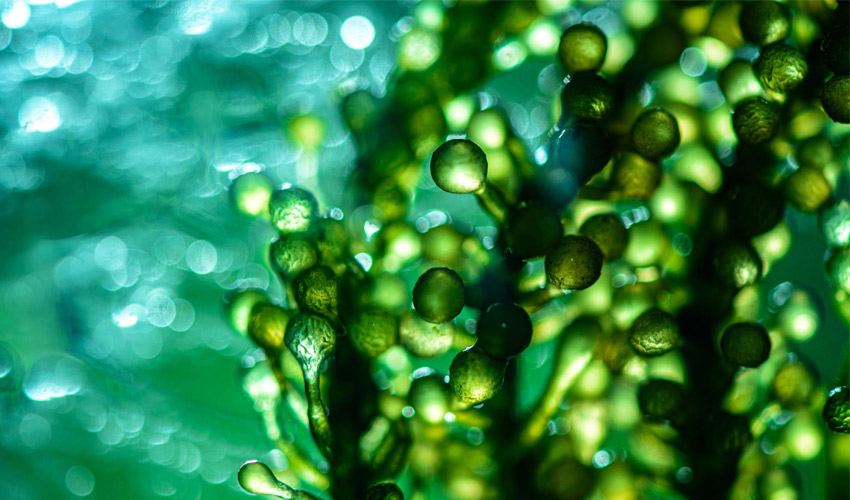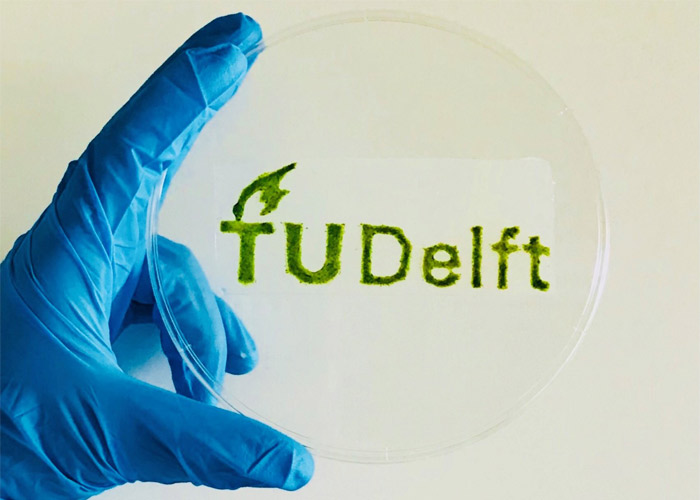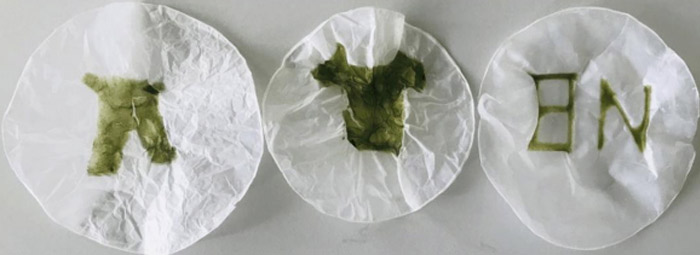Researchers Design An Environmentally-Friendly, Living Material Using Bioprinting

At the Delft University of Technology (TU Delft), a team of researchers has created a new photosynthetic and ecological living material using bioprinting and algae. By depositing living algae on a bacterial cellulose, the researchers have found that the combination of these two organic compounds creates a living material, able to carry out a photosynthesis i.e. that it is able to “feed” itself and to regenerate itself thanks to the light. A small sample of this new 3D printed material could therefore be used for various applications, including the creation of artificial leaves, particularly interesting in places where vegetation has difficulty growing, such as in space.
Research into 3D printing materials is becoming more and more advanced: these are the materials that will make a real difference in terms of the mechanical, chemical and aesthetic properties of the final part. Some actors are looking at living materials, aware that nature has a lot to teach us. Recently, we covered a recyclable and edible foam that was used to print several components for Thomas Pesquet’s mission. This one was made from a naturally occurring polymer synthesized by bacteria and proved to be very resistant to vibrations. This time, researchers have turned to algae to create a robust and durable material. This project is just another example of how bioprinting can be used to create living material for a variety of important applications.

A sample of the bio-printed material (photo credits: TU Delft)
The team explains that they used a non-living bacterial cellulose: it is a compound produced and released by bacteria. It is particularly interesting because it is flexible, resistant and retains its shape under any circumstances. This cellulose served as an envelope for the algae deposited layer by layer: thanks to an FDM 3D printer, the researchers deposited a bio-ink composed of microalgae (thus living materials) on the bacterial cellulose. And it is the reaction between these two materials that is particularly interesting.
Indeed, by fusing the two together, the researchers have created a living material with the photosynthetic quality of microalgae and the strength of bacterial cellulose. Kui Yu, a doctoral student involved in the work, explains, “We created a material that can produce energy simply by placing it into the light. The biodegradable nature of the material itself and the recyclable nature of microalgal cells make it a sustainable living material.” This makes for a very robust, environmentally friendly, biodegradable and easy to produce material.
In terms of applications, the team says that this new material could be particularly suitable for making artificial leaves. These would be able to mimic the behavior of real plant leaves since they mimic the process of photosynthesis: they use sunlight to transform water and CO2 into oxygen and energy (in the form of carbohydrates). This sugar produced and stored by plants can be converted into fuel and thus produce sustainable energy. Artificial leaves would therefore be a considerable asset in areas where it is difficult to grow plants: space colonies come to mind, for example. The new material produced by the University of Delft could therefore be sent into space to grow plants directly on site. A considerable saving in time and cost. Additionally, as carbon dioxide is a major driver of climate change, it is possible that these materials could be used as part of a solution for global warming.

Microalgae 3D bioprinted on bacterial cellulose after one month of incubation (photo credits: TU Delft)
Elvin Karana, one of the project’s participants, concludes, “What if our everyday products were alive: could sense, grow, adapt, and eventually die? This unique collaborative project shows that this question is beyond the realm of speculative design. We hope our article will spark new conversations between design and science communities and inspire new directions for investigations for future photosynthetic living materials.” You can find more information in the official press release HERE.
*Thumbnail photo credits: iStock / greenleaf123
What do you think of this new living material made using bioprinting? Let us know in a comment below or on our Facebook and Twitter pages! Don’t forget to sign up for our free weekly Newsletter, with all the latest news in 3D printing delivered straight to your inbox!






